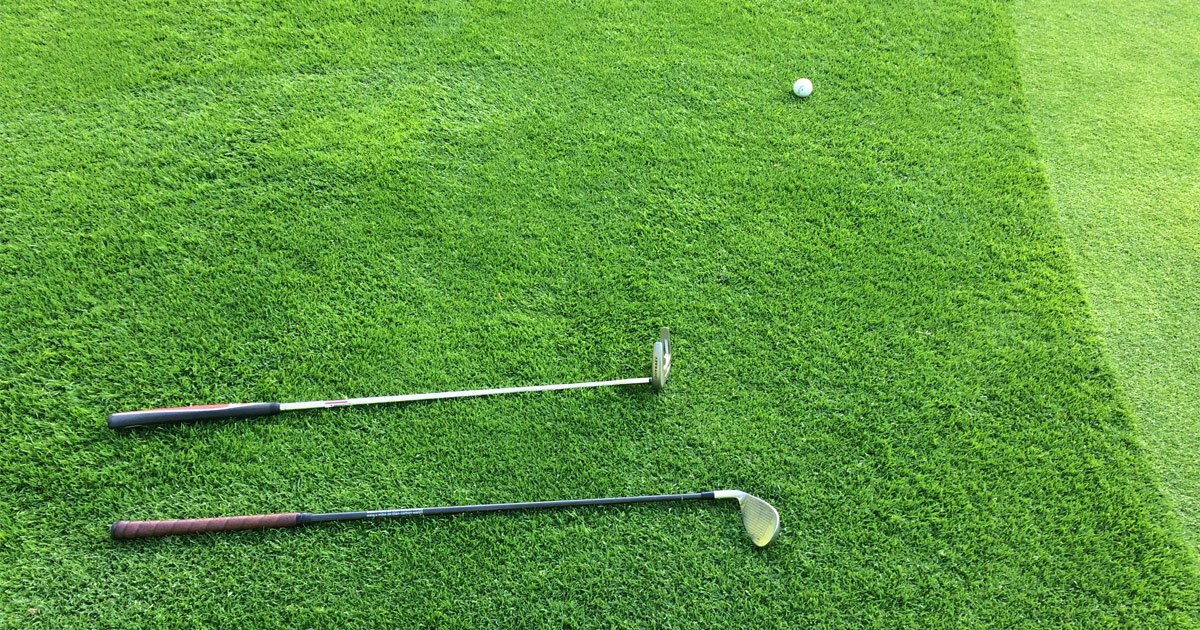When playing out a round of golf, you will need to hit shots that require a higher trajectory from time to time. To make that easier, you’ll need to hit it with a high launch angle to ensure the ball travels higher. It plays a major role in determining the trajectory of your shot, which is essential to pull off different shots to overcome hazards and obstacles standing between you and the hole.
So, which golf club has the highest launch angle? The simple answer is the lob wedge because its club face has the highest degrees. It’s typically somewhere between 58 and 64 degrees depending on the manufacturer. For that reason, it’s the perfect one to use for shots over water, sand traps, and trees. However, there are some alternatives that might be better in certain situations.
As an expert and passionate golfer myself, I have studied all the different golf clubs and their appropriate uses, and based on my experiences, I have learned that every club has a purpose. Clubs with higher launch angles are specifically useful for letting you hit the ball cleanly no matter where you are on the course.
Based on my knowledge and experience, I have written a comprehensive guide on what a launch angle is, why it’s important, how it differs between clubs (including which one has the highest), and how you can increase your launch angle by using different swing techniques. I’ve also included a reference guide on each individual club’s degree of loft and average distance.
What Is a Launch Angle, and Why Is It Important?
In simple terms, a launch angle is no different to the loft, which is how far back the club face is angled. Displayed in degrees, it determines the height at which a golf ball will ascend after its hit, and in turn, what its trajectory will look like.
For example, a golf ball with a 25-degree launch angle will travel lower than a golf ball with a 45-degree launch angle. There are several components that influence launch angle, including how the club face attacks the golf ball, the swing speed, and the club face position at the time of impact.
So, why is the launch angle essential? It’s because the ball flight will impact the distance, direction, and scoring result of your short. There are also different tradeoffs of hitting the ball higher or lower. A higher launch angle will expose the golf ball to wind and other weather elements. However, a lower ball flight may bring water hazards or bunkers into play.
That’s not all, though. The launch angle is also critical when teeing off the ground too, although it’s also impacted by the height of the tee. A lower tee will create a lower launch angle, while a higher tee will produce a higher launch angle.

Which Club Has the Highest Launch Angle?
So, which club has the highest launch angle? Of all the options, the lob wedge has the highest launch angle. The sand wedge is a close second. The difference is the lob wedge has an angle between 58 and 64 degrees, while the sand wedge is between 54 and 58 degrees. The average professional golfer this their lob wedge between 70-100 yards.
Other Wedges With High Loft
We established the lob wedge’s dominance in the launch angle category. However, you can achieve high launch angles with the other wedges: sand wedge, gap wedge, and pitching wedge. Below is a quick breakdown of the differences between each club.
Sand Wedge
The sand wedge is the second highest lofted club. It created a slightly lower launch angle than the lob wedge, making it travel further. Most professional golfers hit their sand wedge between 110 and 130 yards. Much like its name suggests, the sand wedge is the perfect solution for escaping from sand traps. The average degree of a sand wedge is between 54 and 58 degrees, depending on the manufacturer.
Gap Wedge
The gap wedge (approach wedge) has the third highest loft. Depending on the manufacturer, gap wedges will be between 51 and 53 degrees. Gap wedges are ideal for windy conditions. Players may need the distance and control a wedge offers, but they want to keep the launch angle lower to avoid the wind.
Pitching Wedge
The pitching wedge offers the lowest loft out of all the wedges. This club is a popular selection for shots 125 to 150 yards away from the green. Because of its lower launch angle, the ball will also travel further with a pitching wedge. The pitching wedge is a full-swing club with its 46 to 48-degree loft. Some clubs will label it as “PW,” while others will list the degree between 46 and 48 degrees.

Irons and Their Different Launch Angles
All clubs have different launch angles because of variances in their club faces. For longer shots, you need an iron that best fits the situation. Higher-numbered Irons have higher lofts and launch angles, making them better at shorter distances. Lower-numbered Irons have lower lofts and launch angles, making the better suited to hitting the ball over long distances.
Here is a breakdown of your irons, degrees of loft, and what to expect on average distance:
- 9-iron (45-49 degrees of loft): 130 average distance
- 8-iron (41-45 degrees of loft): 140 average distance
- 7-iron (37-41 degrees of loft): 150 average distance
- 6-iron (33-36 degrees of loft): 160 average distance
- 5-iron (29-33 degrees of loft): 170 average distance
- 4-iron (24-48 degrees of loft): 180 average distance
- 3-iron (22-24 degrees of loft): 190 average distance
- 2-iron (19-21 degrees of loft: 200 average distance
It is important to note that while irons have set degrees, you can adjust the loft manually through a different shoulder tilt, tee height, and ball position. Each player has a different level of strength, which could also impact the average distance with each club. We describe how to adjust these in your swing in the next section.
How To Increase Your Launch Angle
The club plays a massive factor in your launch angle. However, there are things you can do with your swing to alter your launch angle and ball flight. Let’s take a look at them one-by-one.
Shoulder Tilt
The angle of your shoulders will impact your launch angle. When you set up the ball, think about where your lead shoulder is pointing.
If you want to increase your launch angle, raise your lead shoulder slightly. If you want to decrease your launch angle, lower your lead shoulder. Altering your shoulder tilt is helpful when you need a specific club to make a certain distance, but want to raise the shot trajectory.
Tee Height
This variable only applies to shots from the teeing ground, but the tee height also plays a factor. To increase your launch angle, try teeing the ball higher from the ground. To decrease your launch angle, tee your ball lower to the ground.
Windier days might require you to tee the ball lower to prevent your ball from getting caught up in the wind. For tee shots over water or trees, try teeing the ball higher. Doing so will create a higher trajectory and allow the ball to sail over trouble.
